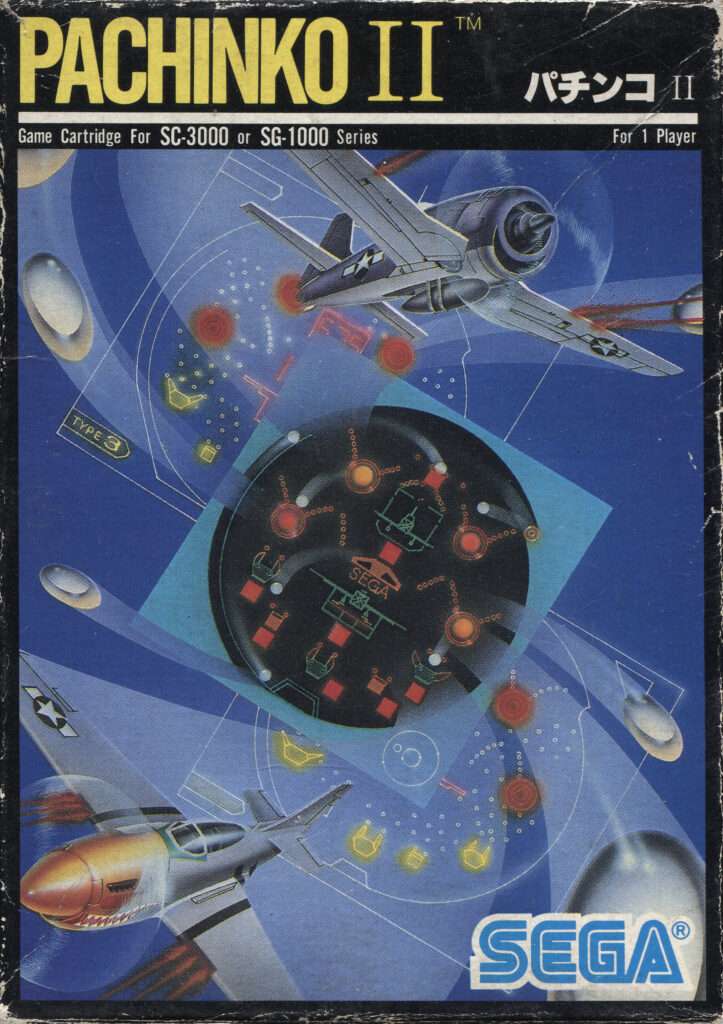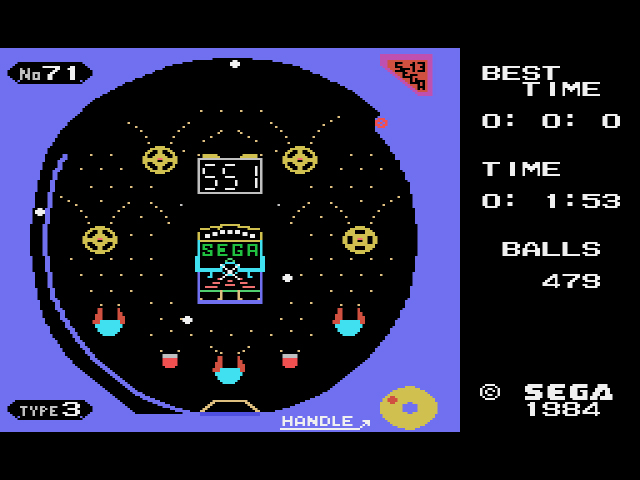
PLAYERS: 1
PUBLISHER/DEVELOPER: Sega
GENRE: Gambling
RELEASE DATE: 1984 (JP)
The gods must be crazy for thinking Japan needed a sequel to the time-wasting simulator that was Pachinko. Yet here I am, a mere three games after Pachinko‘s release, engaging in additional ball-firing shenanigans.
SegaRetro speculates that the original Pachinko was recalled because of a game-breaking bug and subsequently re-released a few months later as Pachinko II. Their theory makes sense for three reasons: 1) Sega didn’t release sequels to any other SG-1000 game throughout the console’s lifespan; 2) Pachinko II was released incredibly close to the original; and 3) Pachinko is one of the rarest, most-expensive SG-1000 games on the used market today. Pachinko may or may not have had a game-breaking bug, but it certainly disappeared off the market fast, leading to the strange emergence of its sorta-kinda sequel.

The original Pachinko‘s machine design was standard, if underwhelming: there were two blue/green holes, three red cups, four spinning wheels, and a slot machine in the middle. Land the ball in any of the holes/cups and you gained an extra ten balls. Get the ball in the slot machine and you received an additional ten balls, plus the potential to win more if you aligned three of the same numbers. The spinning wheels were purely to mess up your ball’s trajectory. This machine has been recreated in full with a slightly different color palette in Pachinko II, so if you never, uh, “experienced” the original Pachinko, this is it.
Pachinko II‘s two new machines are mostly comprised of re-arranged elements of the first table, save for one new addition: the plane. In both of the new machines, the plane sits in the middle and, once triggered, begins to lift and lower its wings in rapid burst. If a ball lands on the wings and enters into the plane, you receive an additional ten balls. When lowered, the plane’s wings extend horizontally into the machine. Adjust the launch dial just right, and you can easily fire a bunch of balls into the plane, accumulating hundreds of extra balls in the process (see screenshot below). Of course, winning hundreds of balls means nothing without being able to cash them in, but at least it gives you a temporary self-satisfaction.

Additional pachinko machines (the game’s only new feature because really, what else would Sega add?) only pad out the general inanity of Pachinko II. As I asked in the original Pachinko review, what purpose do these virtual parlor games serve if you can’t win any money? I’m not expecting the SG-1000 to spit out yen coins or anything, but neither do I see the purpose in launching streams of balls into virtual pachinko machines without the prospect of winning something other than more balls to launch. Perhaps I lack the lustful heart of a true gambler, but for my money, neither Pachinko game has any reason to exist.
F


2 replies on “Pachinko II (SG-1000, 1984)”
I know its strange but this is my favourite review so far. Reads like a great south park episode. So funny
Thanks buddy!